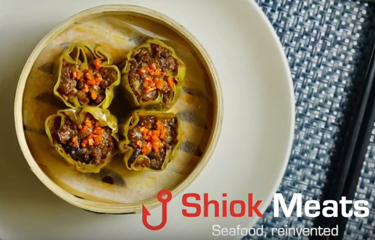Those who remember the introduction of surimi to the U.S. in the early 1980s might still recall a fight that rose to the federal level involving what it would officially be named.
“Sea Legs,” “King Krab,” “Crab Shapes,” and “crab sticks” were all put forward as options. Eventually, the U.S. Food and Drug Administration required – but did not have the manpower to enforce – the term “imitation crab.” Finally, it agreed in 2006 to the long-winded “Crab-flavored seafood, made with surimi, a fully cooked fish protein.”
Previously, the U.S. government oversaw a protracted fight by the dairy industry against “oleomargarine.” The fight involved questions over classification of the product for tax purposes and a mishmash of state laws, some of which included a requirement to sell margarine in its original pale grey color – the yellow dye to be physically mixed in by the consumer – to avoid deception.
Now the scene is playing out for cell-based meats, if that is what they will finally be called.
“Cell-based meat,” “cell-cultured meat,” or “lab-grown meat,” are all terms referring to artificially cultured muscle or organ cells of animals. The Good Food Institute (GFI), which lobbies for and promotes the plant-based meat analog and cell-based meat industries, promotes the term “clean meat.”
“Rather than obtaining meat from animals raised on environmentally destructive factory farms and slaughtered in filthy slaughterhouses, clean meat is produced by taking a small sample of animal cells and replicating them in a culture outside of the animal. The resulting product is 100 percent real meat, but without the antibiotics, E. coli, salmonella, or waste contamination – all of which come standard in conventional meat production,” the organization explains on its website.
The pushback against cell-based meat is primarily coming from cattle ranchers and farm bureaus. Missouri passed the first law that barred companies from misrepresenting a product as meat that is not derived from harvested production livestock or poultry, and similar bills have now been introduced in the legislatures of 25 U.S. states. A bill introduced in Washington state would also make it a crime to sell lab-grown meat and would bar state funds being used for research in the field.
While plant-based beef analogs are already being sold at Burger King, cell-based meats have not yet achieved reasonable production costs and may be a decade away from marketable products. But there is some reason to believe that cell-based seafood could reach that point before cell-based poultry, pork, or beef.
In a January 2019 paper, “Cell-Based Fish: A Novel Approach to Seafood Production and an Opportunity for Cellular Agriculture,” published in Frontiers in Sustainable Food Systems, the authors find that the physiological properties of fish cell- and tissue-culture may be uniquely suited to cultivation in vitro.
“These physiological properties, including hypoxia tolerance, high buffering capacity, and low-temperature growth conditions, make marine cell culture an attractive opportunity for scale production of cell-based seafood; perhaps even more so than mammalian and avian cell cultures for cell-based meats,” the report said.
Hypoxia is the failure of body tissues to receive adequate oxygen, which may cause the cells to die. This is a problem in creating three-dimensional cell-cultures. When grown in multiple layers, the oxygen can only diffuse through a certain thickness without the aid of blood and blood vessels. Fish have an advantage over mammals in that the cells of many fish can tolerate very low levels of oxygen without dying.
Buffering capacity is the ability of a cell to maintain a neutral pH in the presence of metabolic end-products such as lactic acid. In other words, just as yeast dies when the alcohol they produce reaches levels of around 15 percent, animal cells can also be poisoned by their own wastes.
As fish are cold-blooded and adapted to ocean temperatures, including in Arctic regions, they can be cultured at temperatures ranging from 15 to 30 degrees Celsius, while mammal cells are typically maintained at human body temperature, 37 degrees Celsius. Thus, large-scale operations may reduce energy costs for maintaining a higher temperature.
Finally, a seafood product, chitosan, can be used to form a scaffold to which cells can attach to form a three-dimensional structure. Chitosan is derived from chitin, the material the exoskeletons of crustaceans like shrimp and crabs are made from. It is edible and can be customized to dissolve at differing rates, ideally at the same rate as the cells grow.
There are currently three U.S. companies and one from Singapore at a relatively advanced stage of cell-based seafood research.
Finless Foods of Emeryville, California aims to culture bluefin tuna cells. The company was able to offer samples of croquettes made from cultured carp cells to journalists in September 2017, which brought huge interest from the media and investors. BlueNalu, based in San Diego, California, is researching a variety of species, but especially those that cannot be easily farmed. Wild Type, based in San Francisco, California, is working on cell-based salmon. Singapore-based Shiok Meat sampled a small quantity of shumai dumplings made with lab-grown shrimp cells at the Disruption in Food and Sustainability Summit in Singapore in April 2019.
Photo courtesy of Shiok Meats







